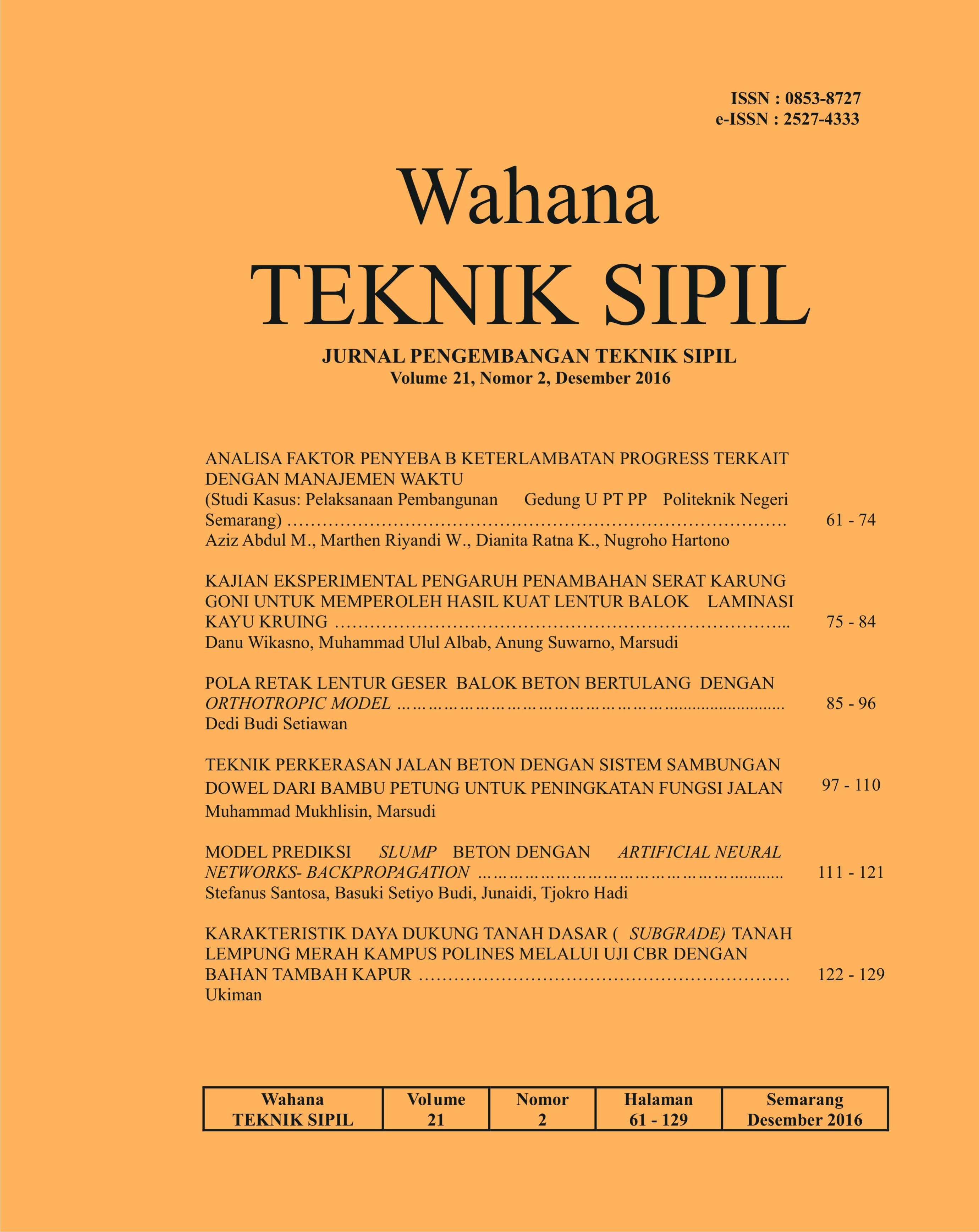ANALISA FAKTOR PENYEBAB KETERLAMBATAN PROGRESS TERKAIT DENGAN MANAJEMEN WAKTU (Studi Kasus: Pelaksanaan Pembangunan Gedung UPT PP Politeknik Negeri Semarang)
DOI:
https://doi.org/10.32497/wahanats.v21i02.831Abstract
One of the most important problems in the implementation of the construction project is a delay the project schedule related to decreased work performance or progress. Delays occurred in almost every project work and have a different problem. Delays in project implementation are always consequences are quite harmful to the users and service providers, due to the impact of delays in the project is a conflict and debate about who and what is the cause. This research was conducted in order to obtain or determine the factors that influence delays in the completion of construction projects. The case study of this research is the building project UPT-PP Semarang State Polytechnic. The method used in this study was descriptive qualitative method. The instrument used in this study through a survey method (questionnaire), the first collected data from the study of literature is followed by interview (interview) to the relevant parties. To rank the factors that cause delays, AHP (Analytical Hierarchy Process) is used sa means of calculating the data questionnaire. The results of data analysis showed that there are four main factors that influence delays in construction projects, sequentially starting from the biggest culprit as follows: (1) delays in delivery of materials, (2) design errors by planners, (3) labor productivity is low, (4) inaccuracy when ordering the goods.
Kata kunci : delay in the project, factor, progress, building construction.
Downloads
Published
Issue
Section
License
Authors who publish with this journal agree to the following terms:Authors retain copyright and grant the journal right of first publication with the work simultaneously licensed under a Creative Commons Attribution License that allows others to share the work with an acknowledgement of the work's authorship and initial publication in this journal.
Authors are able to enter into separate, additional contractual arrangements for the non-exclusive distribution of the journal's published version of the work (e.g., post it to an institutional repository or publish it in a book), with an acknowledgement of its initial publication in this journal.
Authors are permitted and encouraged to post their work online (e.g., in institutional repositories or on their website) prior to and during the submission process, as it can lead to productive exchanges, as well as earlier and greater citation of published work (See The Effect of Open Access).






